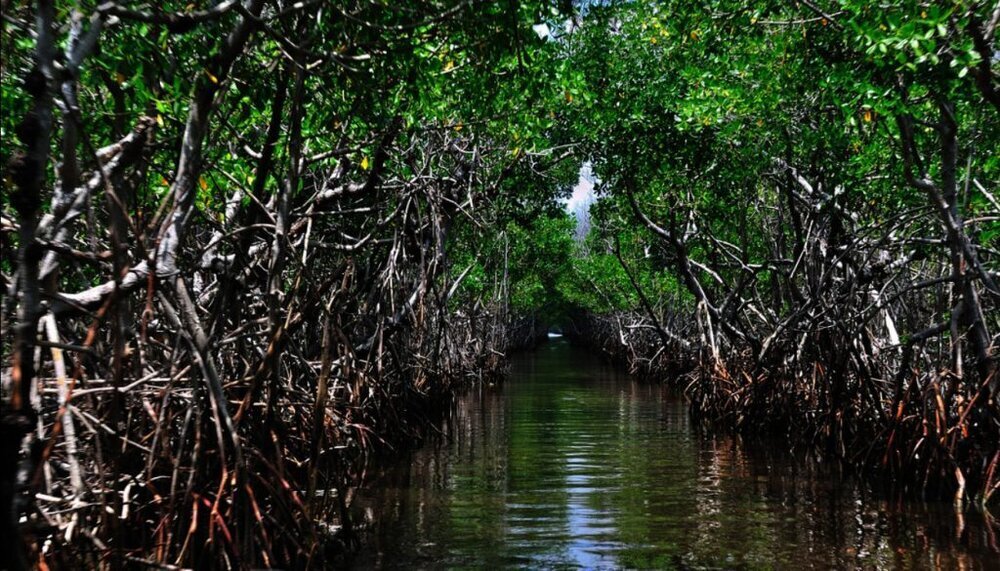Rich ecosystems that support the planet and humanity

TEHRAN – Mangrove forests are rich ecosystems that support the planet and humanity in unique ways by providing conditions for fish growth, storing carbon, and fighting floods. They are able to store about 6 to 8 tons of carbon per hectare of soil per year.
Located in the middle of the land and the marine ecosystem, the Mangrove forests are a suitable habitat for all kinds of aquatic animals and birds.
Protecting beaches from floods and tsunamis, preventing coastal erosion, supporting the nutrient cycle in water, suitable habitats for plants and animals, producing oxygen due to photosynthesis, providing resin and tannin raw materials, a food source for fish and shrimp, the use of the genes of these trees in biotechnology as genetic resources, medicinal properties, beauty, and natural landscape and tourist attraction are some of the benefits of mangrove forests.
Yet mangroves are disappearing three to five times faster than overall global forest losses, with serious ecological and socio-economic impacts. Current estimates indicate that mangrove coverage has been divided by two in the past 40 years.
Due to the importance of these trees, in 2015, UNESCO designated July 26 as the International Day for the Conservation of the Mangrove Ecosystem, to raise awareness of the integral role of mangrove ecosystems and to promote solutions for their conservation, sustainable management, and utility.
Challenges facing Persian valuable Hara
The forests, covering an area of 27,310 hectares in southern Iran, are one of the most valuable forest ecosystems in the world, which are under threat due to various pollutants.
There are 107 species of mangroves, two of which grow in Iran, called Hara and Chandel. The forests are distributed in three provinces of Hormozgan, Sistan-Baluchestan, and Bushehr.
In 1972, mangrove-covered lands were nationally managed as protected areas. In 1976, it was accepted and registered as a biosphere reserve. In 1977, the pristine areas of mangrove forests, flower gardens, and streams in the Strait of Khuran were registered as important wetlands of international value (Ramsar site).
The RAMSAR Convention, an international treaty, was adopted in 1971. Ramsar Wetlands are sites inscribed on the List of Wetlands of International Importance (the "Ramsar List") under the Convention on Wetlands.
Controlling coastal erosion means preventing the destruction of beaches against waves and storms, stabilizing sedimentation and preventing its movement with a special root system, and protecting coral reefs are important features of the mangrove forest in maintaining the biodiversity of the region, and the mangrove forest provides the habitat needs of aquatic animals so that many aquatic species spend their initial stages of growth and reproduction in these forests.
While according to the existing laws, any destruction and pollution of the wetland are prohibited and the forest areas of the country cannot be handed over to natural and legal persons, the Khorbardestan Dayyer wetland and its mangrove forests are facing serious danger due to the construction of roads and the establishment of the shrimp breeding site.
The environmental activists of the region say that such an action and the creation of any structure will prevent fresh water from reaching the mangrove forests and will lead to its depletion. The construction in the tidal range of the mangrove zone should be stopped and we should not cause the migration of birds from the area forever.
Leave a Comment